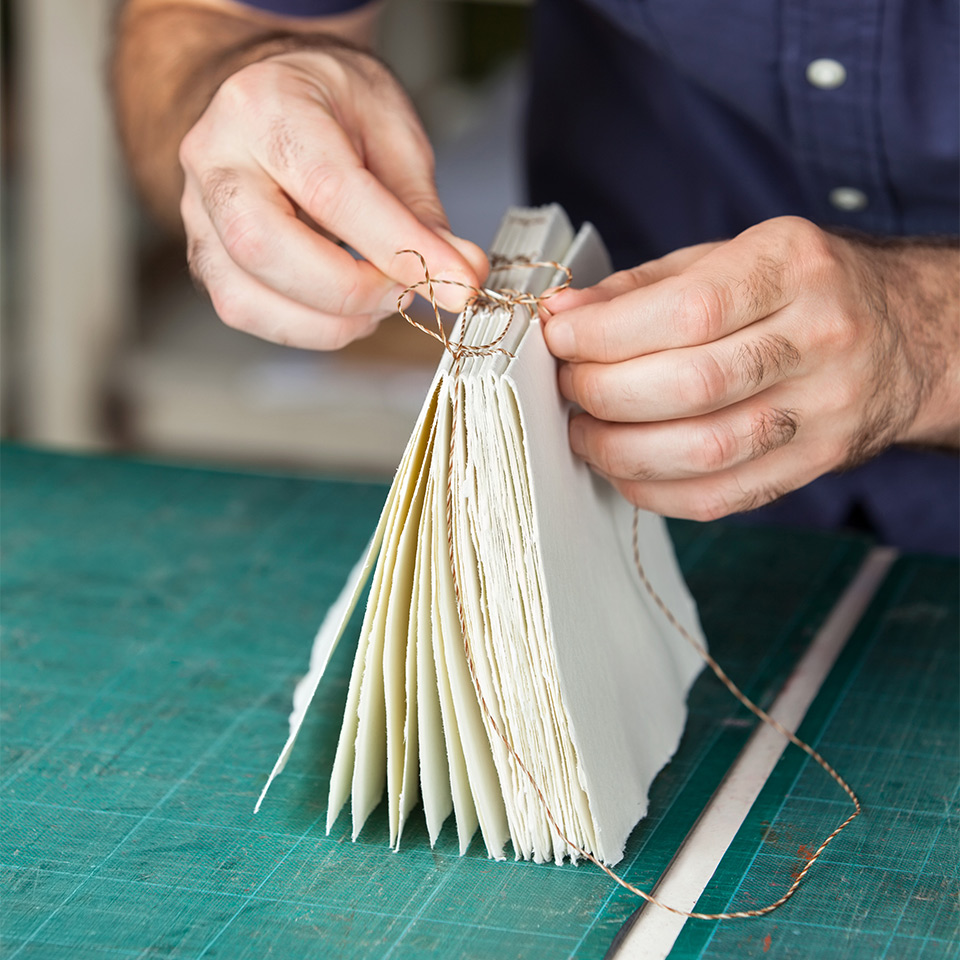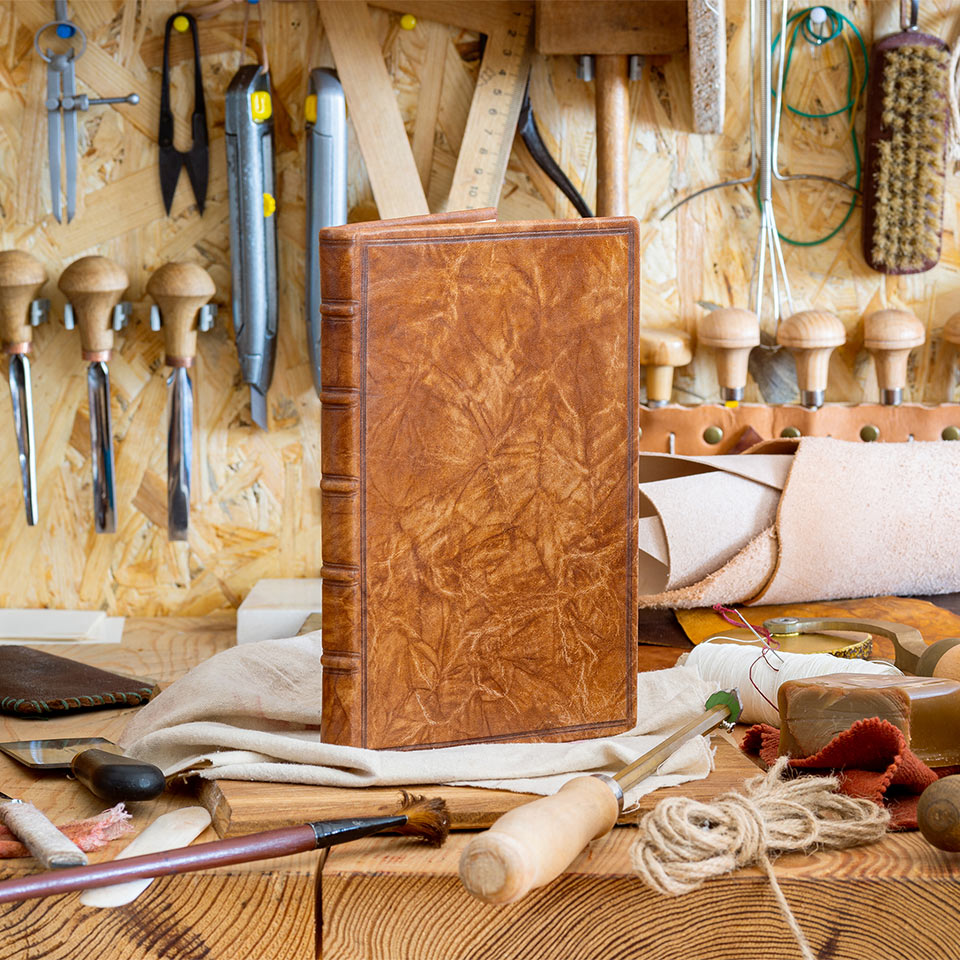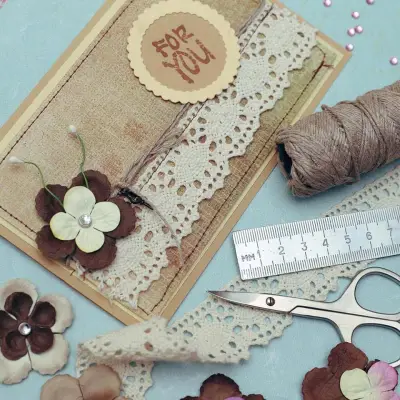The art of book binding tells a story of creativity, craftsmanship, and the preservation of human knowledge. Read on as we peel back the layers of time to explore the history, techniques, and diverse forms of this ancient and enduring art!
Jump to:

The Early Days of Book Binding
The practice of book binding has deep roots that stretch back to the dawn of civilisation. Some of the earliest bound manuscripts date back to 2nd and 3rd century Rome and China, though Egyptian papyrus scrolls are dated even earlier!
Egypt - Papyrus Scrolls
The Egyptians ingeniously crafted sheets from the papyrus plant that thrived in the Nile Delta. These sheets were meticulously layered, smoothed, and bound to form scrolls. A reed or wooden stick, often capped with ornamental elements, served as a central axis around which the papyrus was wound. Intricately woven straps or cords secured the scrolls, allowing for easy unrolling and reading.
Rome - Parchment and Leather Bindings
Parchment (which was animal skin treated for use as writing material) replaced papyrus over time, lending strength and durability to the written word. Romans began to bind these parchment pages, creating codices: the early predecessors of modern books. Wooden boards wrapped in leather served as covers, and leather thongs or cords were threaded through holes along the spine to hold the pages in place. These bindings not only protected the texts but also allowed for easier handling and referencing.
China - Silk and Thread
Meanwhile, China was cultivating its own traditions of book binding. Silk was occasionally used as a substrate for writing, providing a luxurious surface for brush and ink. However, thread-bound books were a defining feature of Chinese book binding. Known as "butterfly books," they consisted of folded sheets sewn together along the spine with silk threads, creating a visual effect that was reminiscent of butterfly wings.
Recommended for you!
Best SellersMedieval and Renaissance Book Binding
As book production grew in the Middle Ages, so too did the craft of bookbinding in Europe. Bindings shifted from wooden boards to leather covers, allowing more flexibility, and leather was often decorated by blind tooling (i.e. impressions made with shaped tools).
Monasteries became centres of bookbinding, with monks creating illuminated manuscripts that were bound in embossed leather. Gold tooling also emerged in luxury bindings, and by the 1600s, gold leaf was decoratively applied by hand.
During the Renaissance, binders began to incorporate decorative elements like geometric designs through the process of gold tooling: a technique involving the use of heated tools to impress intricate designs onto the leather, allowing you to create elaborate patterns and borders. Bookbinders also started to work closely with artists. They would carefully make covers that matched the detailed illustrations inside the books, essentially turning each book into a beautiful work of art.
The Printing Revolution
The invention of the printing press by Johannes Gutenberg in the 15th century marked a new chapter in the history of book binding. Before Gutenberg's press, books were painstakingly hand-copied by scribes, but the mechanised process of the printing press enabled mass production, making books accessible to a wider audience. This also triggered a surge in demand for binding solutions that were efficient, practical, and visually appealing.
One binding technique that emerged was called “case binding”. This prioritised efficiency and durability. It involved creating a rigid protective case that encased the book’s pages. This was usually made from materials like paperboard or cardboard to provide structural support and safeguard the pages from wear and tear. The process also involved sewing pages together along the spine, reinforcing their connection. The sewn text block was then attached to the case by fixing the endpapers to the inside covers. This allowed for easy identification and stacking of the books.
As the popularity of printing books grew, publishers looked for ways to differentiate their products and appeal to a broad readership. One way was through the use of cloth binding. Cloth bindings could be decorated with intricate designs using techniques like embossing and stamping. This technique not only protected the books but also served to advertise their contents - and was very cost-effective!

Types of Book Binding
As we’ve seen, various book binding techniques have emerged over the centuries.
Sewn Binding
Sewn binding (or traditional binding) represents a method that has successfully passed the test of time. It involves sewing together individual signatures or gatherings of folded pages. The resulting text block is then stitched along the spine, creating a sturdy foundation to ensure durability and longevity. Sewn bindings can range from simple pamphlet sewing to more complex examples like the French stitch or the kettle stitch.
Perfect Binding
This is the go-to method for creating paperback books. In this technique, individual pages are stacked, and a strong adhesive is applied to the spine. The cover - which is often printed on a separate sheet - is then fixed to the spin, creating a very sleek and professional finish. Although perfect binding is cost-effective for mass production, the spine's flexibility can make it susceptible to wear over time.
Spiral Binding
In Spiral Binding, the pages are hole-punched and threaded through a spiral coil, resulting in a book that lays flat when open. This binding is most commonly used for cookbooks and manuals, as its design allows for easy note-taking and reference. It also accommodates adding or removing pages, making it a popular choice for notebooks.
Coptic Stitch Binding
Coptic Stitch Binding is an ancient technique that celebrates an “exposed spine”. It was named after the Coptic Christians who used this method for their religious texts. This binding method involves sewing the individual gatherings through the covers. The exposed stitches on the spine create a rustic aesthetic. You’ll often see this method in art journals or other handmade books.
Japanese Stab Binding
This binding method is characterised by its minimalist elegance. Pages are stacked and holes are carefully punctured along the spine. Thin threads are then threaded through these holes in intricate patterns, creating stunning visuals. What makes this method special is that it not only emphasises the beauty of the book but it also allows for unique variations in stitching and thread colours.
Hardcover Binding
Hardcover Binding is simply another name for Case Binding, which we mentioned earlier in this article. It involves sewing the text block, attaching it to the book's spine, and then casing it in rigid covers — often made from materials like cardboard or cloth.
Book Conservation
As books age, they face many threats (including moisture, lights, pests and wear) that can lead to damage and deterioration. Pages can become brittle, bindings can weaken, and inks can start to fade. This is why book conservation is vital.
Conservators possess specialised skills and tools to diagnostically examine condition issues and stabilise rare books. Their treatments aim to protect original materials as much as possible. The techniques they use can include reinforcing weakened bindings, mending torn pages, treating acidic paper, and replicating missing elements.
Restoration practices usually involve surface cleaning, deacidification, mending tears with archival adhesives, and replacing lost cover leather. Conservators use conservation-grade materials that are designed for longevity and reversibility. Minimal intervention and the retention of original components are prioritised.
If the art of book binding has ignited your curiosity, consider enrolling on our accredited Book Binding Diploma Course. Enrol today and delve into the techniques, history and hands-on skills that define this timeless art form, all from the comfort of your own home!













